Kii Mountains - Climbing Uphill with a Smile
Our cyclist climbs the Kii Mountains in western Japan, and encounters the culture that developed on the secluded slopes. Artisans work with rare black bamboo, and make pigment using an old method.
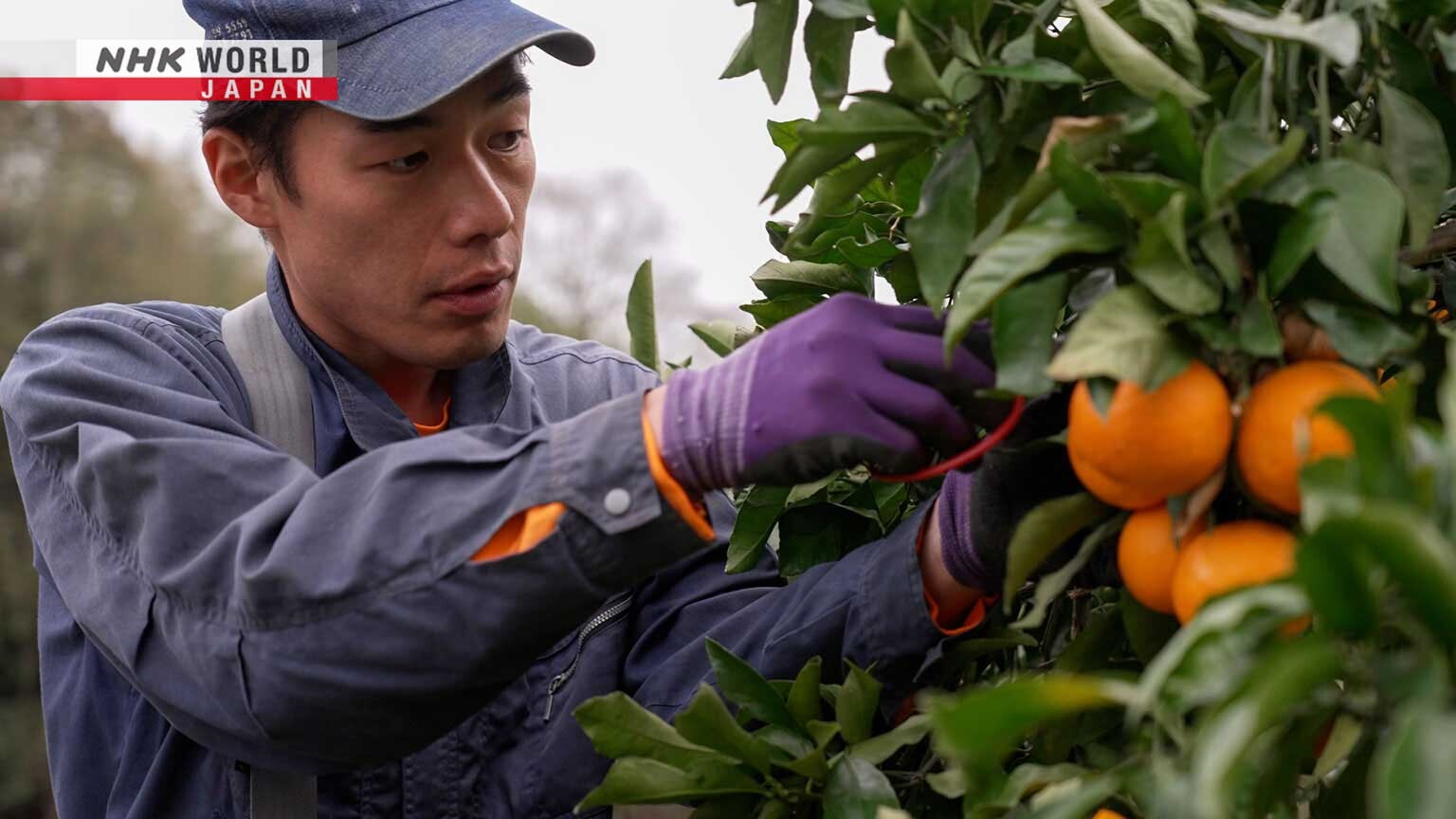
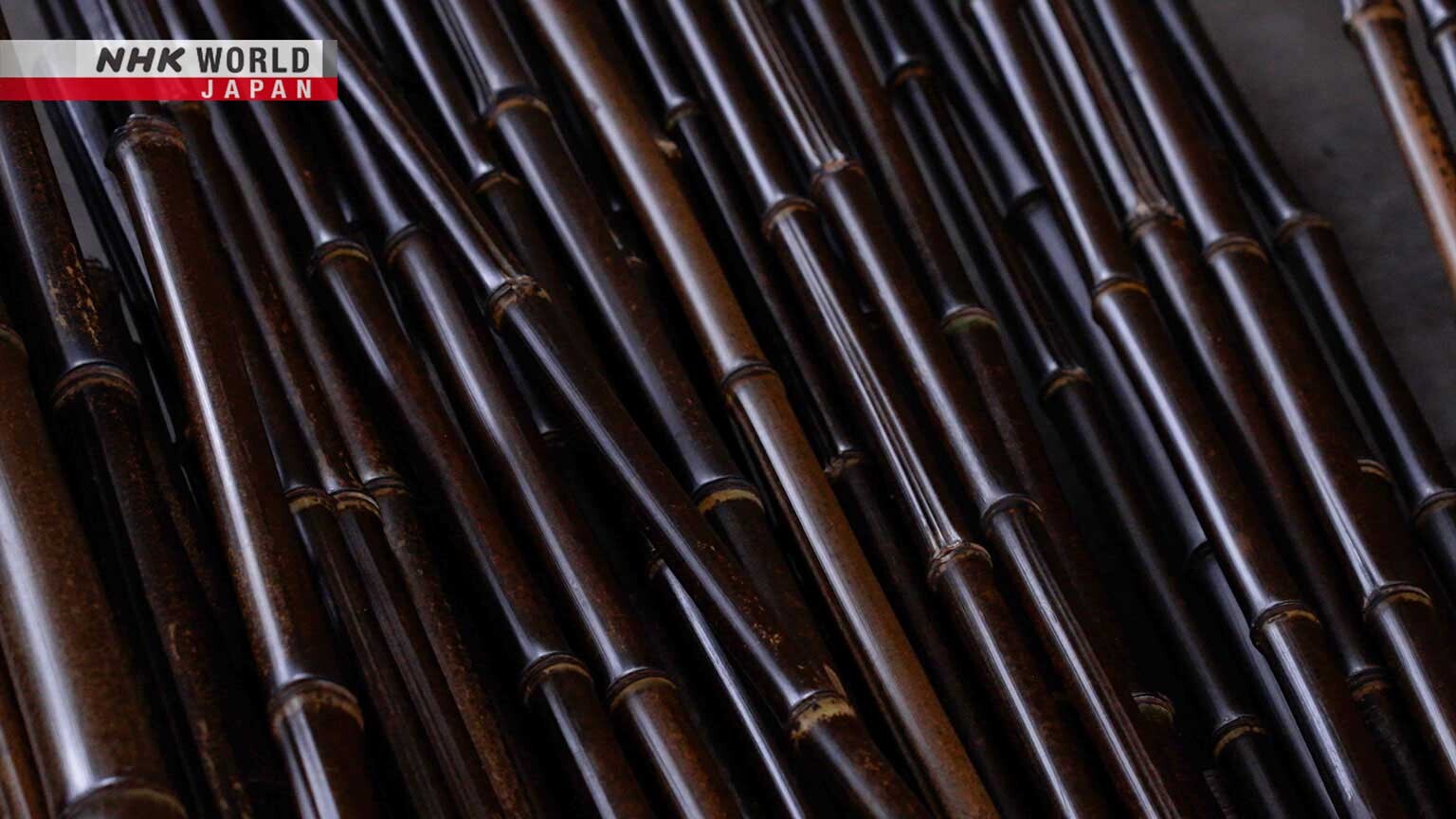
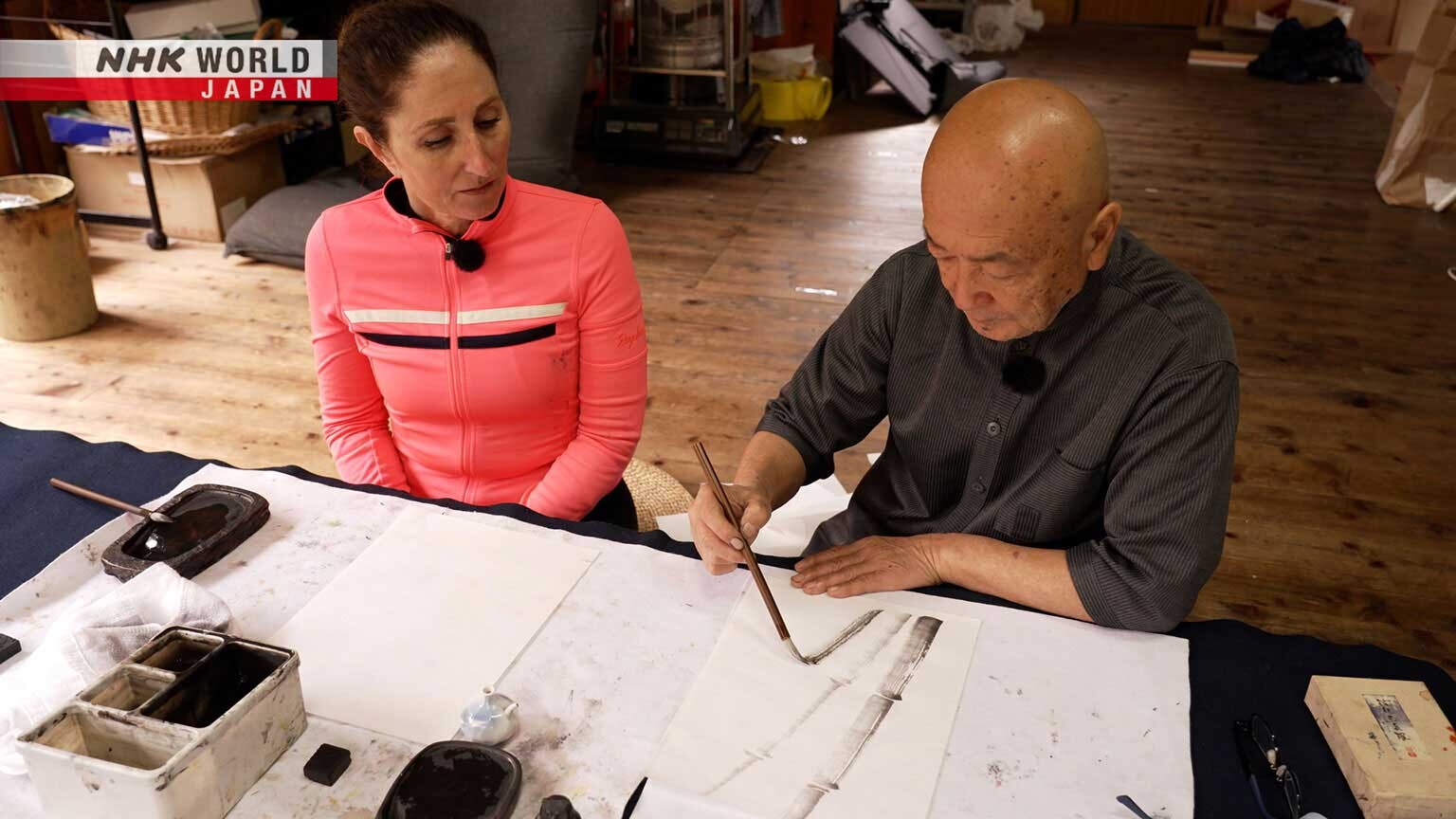
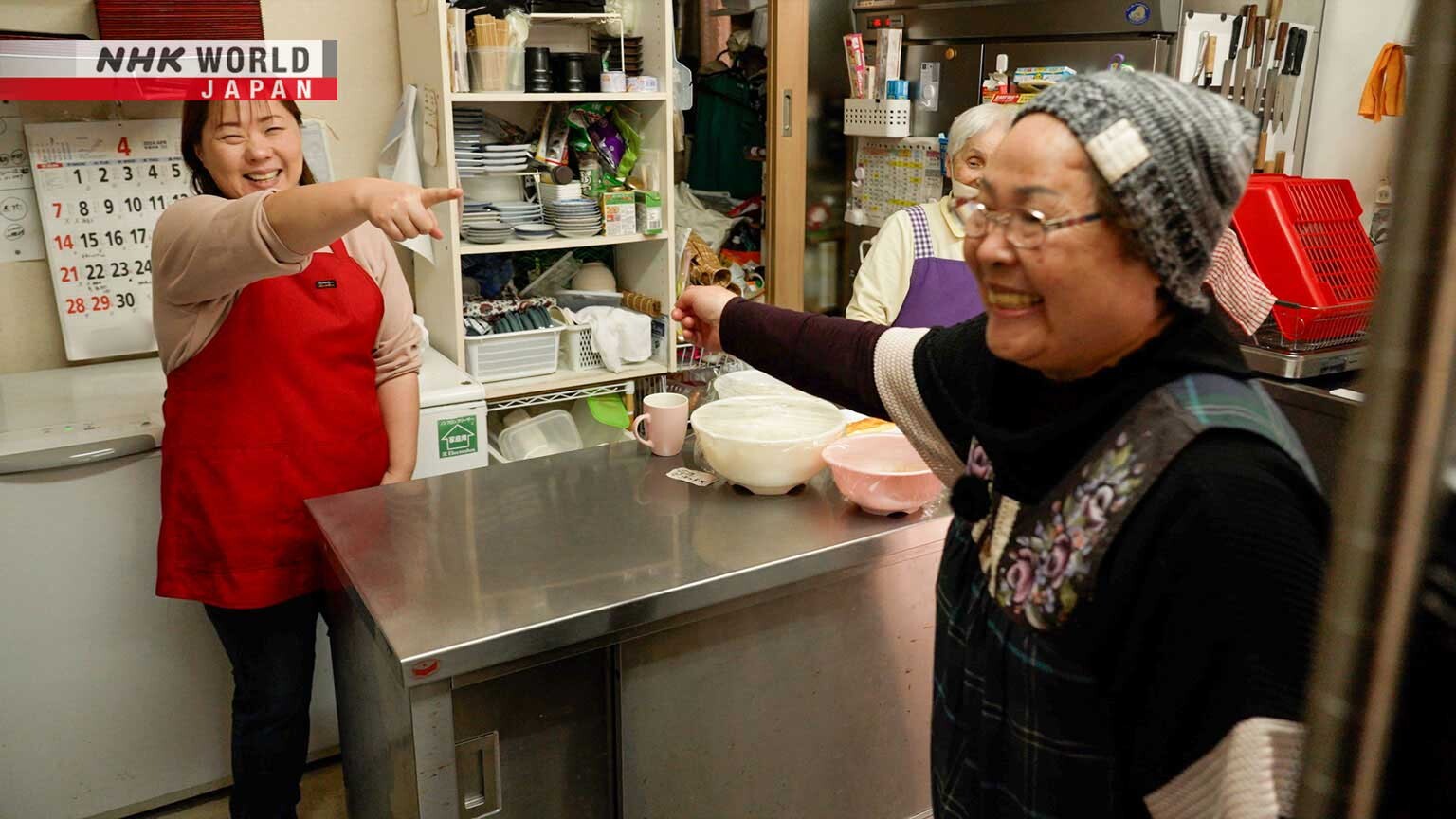
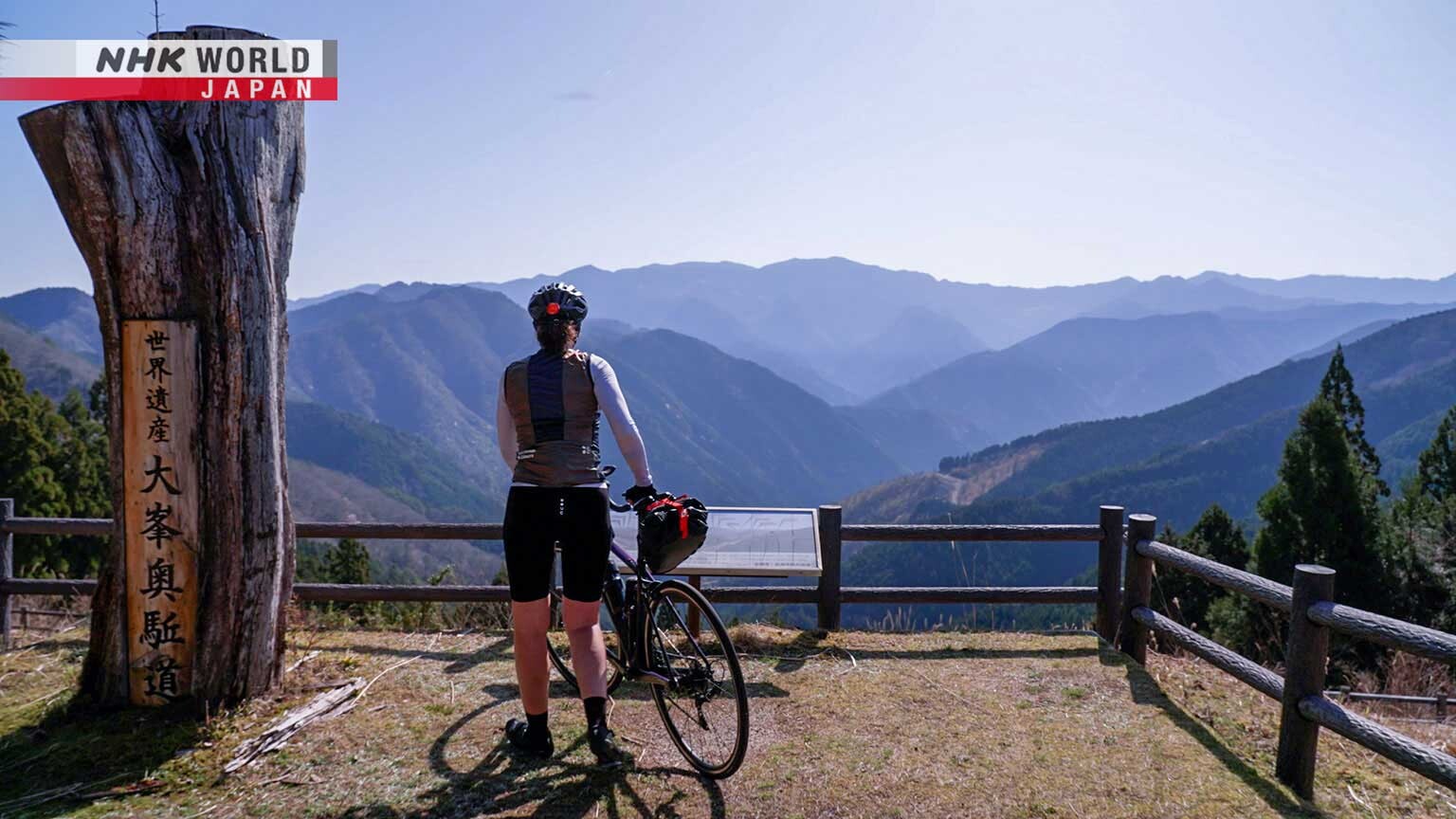
Transcript
The best way to discover little-known sights and make even familiar places feel brand new,
is to go exploring by bicycle.
This time, we're heading up and down the slopes of the Kii Mountains - the Kii Sanchi.
Here, people live alongside bountiful forest.
It's pitch black! It doesn't even look like bamboo.
Traditional skills, tossed around by the waves of history, have nevertheless been preserved.
The color, the blurring, the feel. They're all top class.
The people here have overcome hardship with a smile on their faces.
It's fun to make things.
Through my work, I get to talk to lots of people. That's the best part.
A 350-kilometer ride, moving from mountain to mountain.
Let's get going!
The Kii Mountains straddle three prefectures in western Japan.
This time, we'll be riding through Wakayama and Nara.
Good morning! My name is Andrea McCarthy.
Our cyclist is Andrea McCarthy, from Australia.
She works in Tokyo as an English teacher, but on her days off, she rides as far as 200 kilometers a day!
She has even managed to win a triathlon!
Going through the Wakayama and Nara regions, there's a lot of mountains to get through so there'll be a lot of uphill.
It'll be a struggle but it's always worth it for the downhill fun.
Alright, I'm ready to start my journey into Wakayama and Nara. Here I go!
On day one of her trip through the Kii Mountains,
Andrea will move down the western coast, past the citrus groves of Aridagawa.
On day two, she'll take the train south, and climb deep into the mountains.
On day three, she'll cross into Nara Prefecture.
And on day four, she'll finish with a spectacular view.
Seems to be a lot of cars on the road.
Wakayama Castle on the left.
What a magnificent-looking castle.
School kids ahead. It's April here, so school has just come back in.
Hi!
Alright. Now we're really rolling into the mountains.
On the first mountain road, Andrea shows what she can do.
It's a steep incline, but she makes swift progress.
So many cherry blossom petals are scattered across the road.
It's like a beautiful carpet.
Beautiful.
Oh yeah. Beautiful mountain roads.
The reward for the tough climb is a downhill slope.
That is a view, isn't it!
That is a view.
Andrea is arriving in Aridagawa, a region that has cultivated citrus fruit since ancient times.
Mikan are her favorite fruit.
So she's going to meet with some farmers.
Hello.
The Ozawas, Tomoyo and Mitsunori, are a married couple that grow various citrus fruits.
Is this a mikan?
It's a Hassaku orange, a slightly sour summer fruit.
Over here is another rare variety.
Valencia oranges.
I've heard of them! They're often used to make juice.
After the flowers bloom, it takes 14 months for them to bear fruit.
We leave them to grow for around 400 days.
They turn orange, then a bit green again. That's the time to eat them.
Wow. Interesting.
Small and round. Really cute.
I want to plant many different types.
That's because I want to eat different types throughout the year!
- So it's like a hobby.
- It's both a hobby, and work.
- So you grow four types?
- No, there's one here...
We picked these, but there's two.
3, 4, 5, 6, 7, 8, 9, 10, 11, 12, and 13.
- And this isn't your only orchard?
- No, we have a dozen more.
In total, the Ozawas grow 60 types of citrus fruit.
Andrea will try a Kiyomi orange, which is in season at the moment.
It smells so good.
Wow, it's so juicy, you'll not believe it.
Yummy.
It's a little bit sour but it's really sweet.
I could eat these all day.
The Ozawas have been growing citrus here for six generations.
Mitsunori grew up watching his father Masami pursue that tradition.
But at first he didn't want to do the same.
I was still growing up.
Fundamentally, farming is dirty work.
I wanted to style my hair, not smell like sweat and fertilizer.
Also, mikan were cheap. Just a thousand yen per box.
My father would complain about how unprofitable the crop was.
Mitsunori joined a food wholesale company, where he saw farmers using profitable sales methods, such as mail order.
He was inspired to try it for himself, so he went back to the family business.
I wanted to sell mikan in the city, where they fetched a high price.
But I didn't cultivate properly, so my father told me off.
He insisted on growing oranges properly. We fought a lot.
The roots of each plant grow differently.
This isn't a flat field. The gradient and dryness are always different.
You have to prune them accordingly. But he cut everything the same way.
Mitsunori ignored his father's warnings, and pruned branches he shouldn't have.
As a result, some of the plants died.
It should have been hard to kill those trees. But I handled them too roughly. I was shocked.
Mitsunori realized he had to start again.
He relearned the basics from his father, and pursued his own methods of fertilization and soil preparation.
He built a fan base by posting about citrus fruit and cultivation on social media.
Masami was skeptical of social media, and the reaction took him by surprise.
At first, we clashed. "Why are you bothering?", I'd ask.
I'm old-fashioned. I wanted to focus on farm work.
But the times have changed.
It's good to keep people informed. Because they want to hear about it!
I find it strange, to be honest.
It's odd that people are so interested in rural citrus farmers.
If something new comes along, and it looks fun, I'll do it.
Doing too much and getting overwhelmed can actually be quite fun.
Young farmers, watched over by a strict but considerate father.
Away we go.
Day two. Andrea is riding alongside the 115-kilometer long Hidaka River.
And it's time for another uphill climb.
It's absolutely amazing out here.
Up the hill we go.
Look at that view.
That's a good morning for you.
The scenery along the river is beginning to change.
A lot of bamboo is growing.
Beautiful, straight trunks.
Let's have a look in here.
Good morning.
- What are you holding?
- It's black bamboo, from the mountain.
We're carrying down bundles of it.
In Japan, black bamboo is extremely rare.
Its understated coloring makes it very popular, especially for screens and decorations.
Kanasaki Hiroaki is a specialist; he does everything from harvesting to processing and sales.
He's going to show Andrea where it grows.
Here we are.
It's pitch black! It doesn't even look like bamboo.
It doesn't. Black bamboo is rare.
After the bamboo is cut down, it's left to dry for three months.
Then it's taken for processing.
The black bamboo factory.
She's shown a key step: heating the bamboo.
- Is it hot?
- Oh yes.
Applying 900-degree Celsius heat draws the oil in the bamboo to the surface.
Polishing these stems gives a black, glossy finish.
And while the bamboo is warm, it can be straightened.
This difficult process tests the skill of the artisan.
- Who's this, doing the work?
- My father.
We do this job together.
I've been doing this for a decade. But he's been doing it for 30 years.
He can quickly assess how much pressure to apply to each stem.
He's much faster at making that kind of judgement.
And he's a better judge of how to straighten bamboo without damaging it.
The Kanasakis' workshop has been running for 115 years.
Black bamboo was first planted here in the 19th century.
The processing industry flourished.
In the late 1980s there were around 100 households in this region, and most were involved in the trade.
But working on the slopes is tough.
The aging community couldn't keep up, and many businesses closed.
Today, the industry has almost disappeared.
We have our worries.
It's a family business. I can't say we'll continue forever.
But I don't want to give up.
To protect this traditional industry,
Kanasaki began to plant bamboo in deserted farmland, which was increasingly available.
He believes that workers will be attracted by the idea of working on flat land - which is much easier.
He also runs classes, which help to spread awareness of black bamboo.
I grew up watching my father work with bamboo.
It's a core part of my childhood.
So I really didn't want the industry to disappear.
I want to involve everyone in the community, not just my family.
Andrea is taking the train from Hidaka to Shirahama.
It's a chance for a well-earned rest.
Back in the saddle, Andrea is full of energy.
She glides deeper into the Kii Mountains.
What a bridge to go over.
Just gorgeous.
Here we go.
Look at that.
Beautiful.
Up in the mountains, there's someone Andrea wants to meet.
Ah, wonder what this is.
Excuse me. Hello.
- I heard there's someone interesting around here.
- I'm not that interesting.
What are you doing?
Well, do you know pine trees?
Smell this.
OK. Oh, wow.
- It smells like eucalyptus or something.
- That's pine resin.
If you burn it, you get soot.
And you can use that to make sumi-a type of ink.
- For calligraphy?
- Yes, exactly.
Japanese calligraphy.
- This is a raw material.
- This?
Sumi has been a familiar pigment in Japan since being introduced from China around 1,500 years ago.
It is widely used in art and calligraphy.
The raw material is soot.
Today, it's generally made using mineral or vegetable oil,
but in the past it was made by burning pine branches.
Horiike Masao is a master of the whole process, from burning pine to producing sumi.
- Watch your footing.
- Ah, thank you.
Oh, what's this?
The corridor leads to 12 small rooms, each with a stove for burning wood.
- You put the wood in here.
- So it's like a stove.
And the soot collects on these nets.
- Here? This is all soot?
- Yes. This is how it's collected.
Let's burn some pine. A little bit at a time.
Gradually, the soot will come out.
The slopes of the Kii Mountains make it difficult to grow crops.
But pine trees grew naturally.
So soot was a valuable source of income.
Once it's lit, I close the door. Then I do all the other rooms.
I'll continue to chop and distribute the wood. For 100 hours.
Adding too much wood at once will cause the soot to burn off.
The pine must be added gradually to each of the 12 rooms, over the course of 100 hours.
The soot is collected from the walls and ceiling of each room, using a brush.
This is mixed with animal glue and water, and kneaded into a paste.
Finally, the sumi is molded, cooled, and left to dry for six months.
Amazing.
- Is this part of the process fun?
- It's hard. I don't want to do it.
But if I don't do it, I can't get soot. And then I can't make the best sumi.
Ink made with pine soot is wonderful.
The color, the blurring, the feel. They're all top class.
This ink has been highly regarded for over a thousand years.
But newer methods were easier and cheaper.
In the 1950s, the practice came to an end in this region.
It was Horiike that restarted production, 30 years later.
Artists and calligraphers rated this sumi highly. They asked me to make it again, so I went for it.
The demand for sumi has been impacted by the availability of regular ink.
But Horiike continues to make the very best pine soot sumi.
To generate more interest, he creates colorful sumi by mixing pine soot with pigment.
He began using sumi creatively, to showcase its appeal.
Now, this is his greatest pleasure.
It's a true joy to show people something I drew with my own sumi.
It's fun to simply go ahead and do something.
I'm not doing it for the sake of the world, or for anyone else.
I'm doing it for myself.
Day three, and it's another mountain road.
This one takes Andrea up 240 meters.
She is spurred on by the thought of the view from the top.
Woah, the sakura is like snow falling from the trees, petals all over the ground.
Awesome. So beautiful.
It's late spring in the Kii Mountains.
That is spectacular.
You can see quite a big panoramic view.
That really is something else.
There's a town.
Okeyasan.
Ah, I wonder what that is.
I might pull in and have a look.
Okeyasan?
Matsumoto Hamaji is an "okeyasan" - a maker of buckets and tubs, known as "oke."
Ah, you've come a long way.
What are you making?
It's a rice bowl.
- Can I have a look?
- Of course. Go ahead.
- What's it made of?
- Japanese cedar, grown locally.
What a lovely fragrance.
- It smells good, doesn't it?
- Lovely.
Oke are everyday objects, used since ancient times for many purposes, such as serving and storing food.
They make food taste better. Wood breathes.
Hot food doesn't cool down in plastic.
But because wood breathes, it regulates the temperature.
- Do you have any sushi oke?
- Yep.
I have a big one. So I'm looking for something smaller.
This size?
Is that circular or elliptical?
Matsumoto makes bespoke oke for customers with specific requests.
You bought lots!
- Ah, that caught my eye too.
- It's for drinking sake.
And a bowl, for rice.
- Each one is different.
- Because they're handmade.
How long have you been making oke?
Well, I became an apprentice when I was 18.
Now I'm 90.
You're 90 years old?! You don't look it!
Matsumoto began his apprenticeship after the Second World War, when Japan was poor.
In the mountainous region of Tanabe, it was one of the few trades available.
Craftsmen would only get two days off a month.
You'd work from 6 in the morning until 9 at night. That's how it was.
Didn't you want to quit?
At first, I just wanted to go home. Especially when it got dark.
After seven years of relentless training, Matsumoto had acquired enough skill to go independent.
But times were changing.
Plastic arrived, and wood was no longer needed. Lots of us gave up.
Here in particular, there used to be lots of oke makers. They went out of business.
Matsumoto gave up on oke, and found work at a lumber company.
But two years after retiring at age 60, he unexpectedly found himself resuming the craft.
One of my neighbors asked me to fix one of their oke.
I picked up my tools, and ended up making two brand new oke.
My neighbor was delighted.
So I decided to start up again since it made people so happy.
In the 30 years since, Matsumoto has made as many oke as his time and energy allows.
It's fun to make things.
I enjoy figuring out how to make each individual oke.
Through my work, I get to talk to lots of people. That's the best part. I enjoy that the most.
And what about the future? Will you carry on?
Yes, as long as I have the energy.
- Keep up the good work!
- Thank you very much.
It's just beautiful around here.
The mountains frame everything, no matter which way you look.
Andrea has crossed into Nara Prefecture, and a town full of traditional inns, equipped with onsen-hot spring baths.
I just love crossing the river.
We've got some onsen starting up over here, hot springs.
Nosegawa is home to just 300 people.
Look at these! All just cherry blossoms.
It's gotta be full bloom.
Andrea is looking for somewhere to eat.
More of the cherries.
Who could ask for more?
It's a gorgeous day for it.
Oh, "Inakashokudo." Perfect timing for me. Oh.
Let's pull in and see what's going on.
Hello!
- You cycled here?
- That's right.
Bessho Setsuko runs "Inakashokudo" - which means "countryside restaurant."
It serves dozens of home cooked dishes, featuring home-grown ingredients.
OK, here you are.
This tempura meal set is one of the most popular choices on the menu.
"Itadakimasu!"
It features lots of local vegetables and fish.
There are six kinds of tempura, including kabocha pumpkin and shiitake mushrooms.
Japanese knotweed is a common food here.
It's simmered in a savory broth, and also served as tempura.
That's where Andrea's going to start.
- I'll try this.
- It's a little sour.
Oh, it is! It hits you later.
- What's this?
- Candied fish. A Nosegawa specialty.
- It's very sweet. And easy to eat.
- It doesn't smell fishy.
Everything's home-cooked or almost completely homegrown around this area.
And I can't even begin to tell you, this lady is an expert at cooking.
Everything is just, the flavor is so spot on and each one has its own distinct flavor.
Thank you.
"And" is the only word I understood. The rest was a mystery!
It was really delicious. You're Setsuko's daughter, right?
This is my daughter, Sanae.
I do a bit of everything.
- This is my husband.
- I'm the pot washer.
And here's my sister.
She always tells me off. For being too bossy.
So who's actually the boss?
The restaurant opened eight years ago.
Until then, husband Hisao was enjoying his retirement.
Setsuko had turned their spare rooms into a bed and breakfast.
Both of them were enjoying life.
But in 2011, there was a devastating flood.
A mudslide pushed 30,000 trees into the river, blocking its flow and flooding the village.
The family spent three months in an evacuation center, and three years in temporary housing.
- It must have been a tough time.
- No, it was fun.
What was fun about it?
The whole village ended up living together.
Honestly, it was fun.Everyone in the same place.
- I stayed positive.
- That's the most important thing.
Four years on, Setsuko's positivity brought unforeseen change to her family's lives.
I needed something to do. So I wanted to open a restaurant.
- I said, "Go on then."
- You left it to me!
She gets bored.
My husband didn't like the idea.
Why's that?
I saw that the population of our village was shrinking.
But she twisted my arm. I had no choice.
That's how he became a pot washer.
So that's how it happened!
The Bessho family wasn't planning on opening a restaurant together.
But it's been an unexpected hit with tourists.
With the flood behind them, the family enjoy busy days, full of laughter.
I bet you didn't think this place would get so popular.
True. But if people come once, they seem to come again.
If I spend all day at home, there's nothing to do.
At the restaurant, even without customers, we're busy preparing.
It keeps us busy. And that's fun.
Setsuko believes it's better to act than to worry.
That's the power of positivity.
It's the last day, and with her goal in sight, Andrea wakes up early to tackle another climb.
The view through there is to die for.
Her four-day journey has included five difficult ascents.
But the finish line is just six kilometers away.
This is the final challenge.
I made it to my goal!
This view is spectacular, I can't believe it.
Andrea has reached her goal: a lookout point 1,000 meters above sea level.
The entire mountain range stretches out before her.
Well, here on ends the end of my gorgeous cycling tour through Kii Sanchi.
I've met, along the way, several people who've really impressed me.
I've stopped in and seen some local people, the artisans and farmers and craftsmen.
Watching them and learning from them has impressed upon me that through everything else, no matter what,
you just go forward, you just keep going, just look ahead, be positive,
and everything else just somehow falls into place.
And I've learned also to smile.
That the power of the smile, the power of happiness, the power of family,
and the power of doing what you want to do is all that matters.
I love Kii-sanchi and I hope to come back again someday.
On her ride through the Kii mountains,
Andrea met people who face life's uphill climbs with resiliency - and smiles.